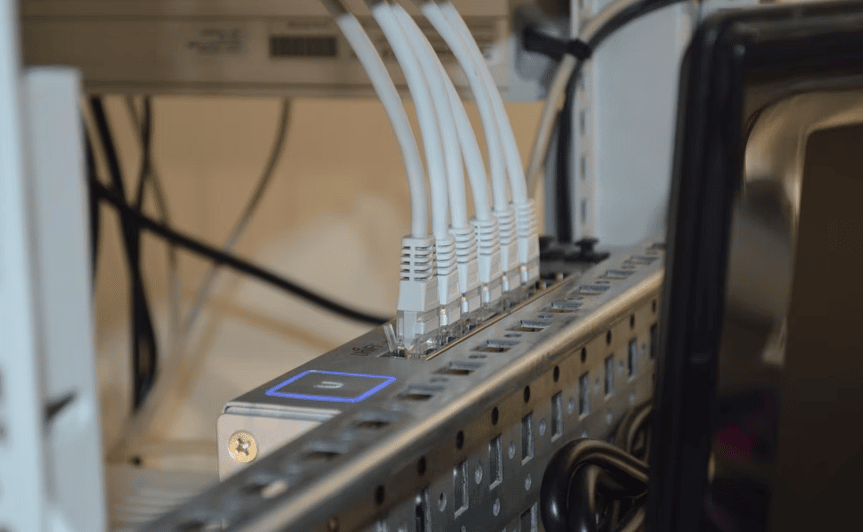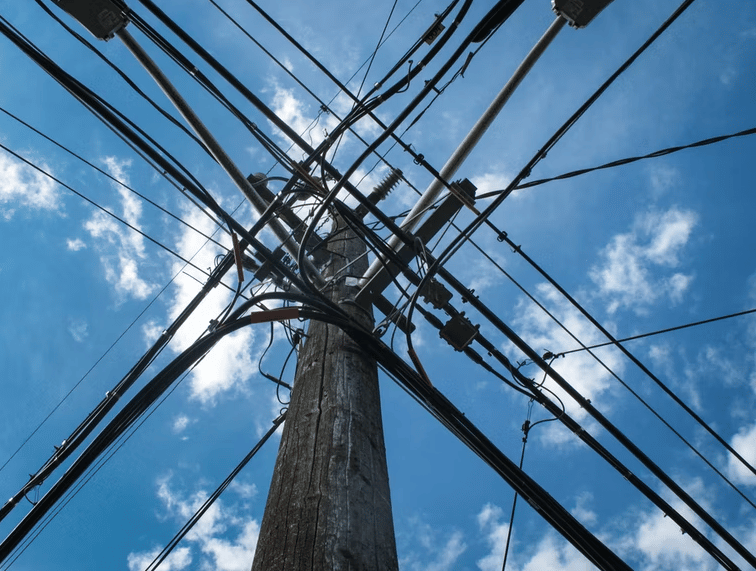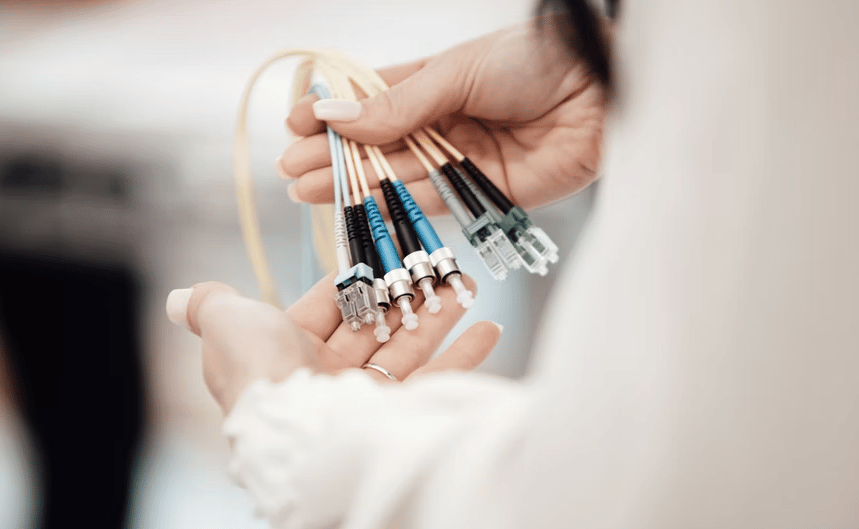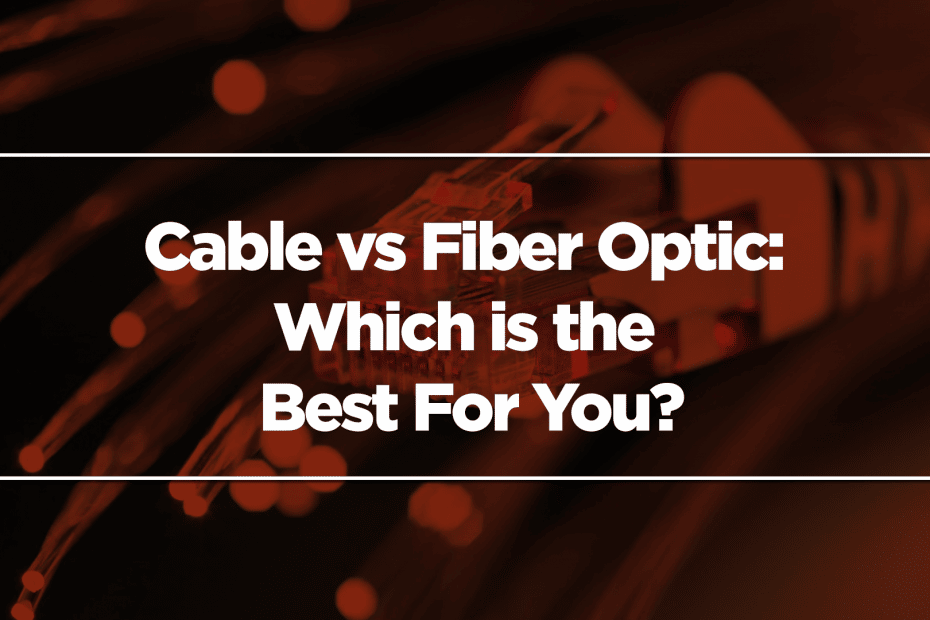The internet now plays a large role in our daily lives, especially in the lives of people who live in smart homes. Many smart home devices rely on the internet to communicate with each other. For example, you can control many devices using apps on your smartphone, and the internet is its enabler. Also, smart security systems send video recordings to the cloud.
That said, it is best to make conscious decisions to ensure you have a good internet connection. Knowing the difference between fiber optic and standard cable can help you make those informed decisions.

Let us help you understand how each works, so you can know which one is the best for you.
Fiber Optic and Cable Comparison
Cable is the older technology; it is the same technology used in cable TV. This setup uses a coaxial cable to transmit data via an electric signal. Your modem converts that signal into a digital signal. Then, the devices use that converted signal to communicate with each other.
Again, cable internet uses the same connection as cable television. So, many cable companies bundle TV and internet services together.
For a long time, cable internet remained the most popular method of internet connection. But that changed with the advent of fiber optic internet.
Instead of using coaxial cables, this new technology uses cables containing plastic or glass fibers. And instead of sending the signal as an electric signal, it uses light pulses, which travel faster.
Please note that there are two types of fiber optic internet: dedicated internet access (DIA) and broadband fiber. The former is used for business and government operations. On the other hand, the latter is aimed at standard day-to-day domestic use. Since we are talking about smart homes, any mention of fiber optic below will be about broadband fiber.
Which Should You Choose?
Fiber optic is the newer of the two technologies, but that does not mean it is always the right option. There are various factors you should consider. More specifically, you have to consider availability, reliability, speed, and cost. Let’s compare.
Availability
Cable technology has served the world for decades now. That means that the infrastructure is already well-established. And so, cable internet is widely available. It doesn’t even matter if you live in remote rural areas. Cable internet can reach you.
On the other hand, fiber optic is not as accessible. Its components are expensive, and only trained personnel should install fiber optic cabling. That’s because these cables are somewhat susceptible to weather damage. Also, parts break more easily than in other cabling systems.

That said, fiber optic is not as available as cable internet. But fiber optic internet has undeniably seen growth in the last few years. It is more widespread today, especially in major cities and urban areas. Experts also predict that in the next six years, fiber optic broadband lines in Europe are set to more than double. That means fiber optic will soon be more available. But now, it is still less available than cable internet.
Reliability
Fiber optic losses to cable internet in availability, but the opposite is true regarding reliability. It has better performance levels over a longer period and is more consistent.
That’s mainly because fiber optic uses light beams rather than electric signals. Rain, cold, and extreme heat can affect electrical signals but can’t affect light beams. Also, fiber-optic cables are not subject to electrical interference. So, the fiber-optic cable can run over very long distances without needing to boost or clean the signal.
Moreover, fiber optics give you your own dedicated line. You receive a direct internet connection that’s not shared with other users. So, the speeds that you pay are yours alone. To better grasp how special that is, think about having a lane in the road that only you can use.
That’s infinitely better than cable internet, where you share your connection and speeds with other users. Thus, during peak electricity and internet usage, you experience slow connection speeds.
Speed
This factor is perhaps the most important one for your smart home. It determines how responsive your devices will be. Also, in a way, it influences how many devices you can add to your home.
There’s a big difference between cable internet and fiber optic when it comes to speed. Cable internet has a speed that ranges between 10 to 500 Mbps. Furthermore, it has an upload speed range between 5 to 50 Mbps.
That may have been enough in the past. But we now have HD and 4K streaming. Then, the pandemic made video calls on Zoom, Skype, and other platforms more common. Additionally, smart homes and IoT filled the houses with multiple internet-connected devices. Cable networks now struggle to keep up with modern demands.
Fiber optic does not have the same problem. It offers speeds that can reach between 250 to 1,000 Mbps. The speeds are symmetrical for uploading and downloading. That said, the slowest fiber-optic connection is still five times faster than the best cable connection. And hence, it is better for smart homes. So, fiber optic blows the competition away in this one.
Cost
Internet connection does not come for free. So, of course, you have to think about the cost.
The cheaper option is cable internet. That should not be a surprise, given the difference in the two’s quality. Network Interface Cards used for fiber-optic cables alone can cost upwards of $1000 each.
That is really unfortunate for owners of smart homes. But don’t worry, fiber optic is becoming more popular. And that will make the cost go lower in the future.

A UK study pointed out that once fiber optic is booming, countries can save lots of resources in operating costs over a 30-year period. Meaning governments have to spend less money on the network’s infrastructure, maintenance, and day-to-day running. Therefore, they are likely to get on board and increase infrastructure investment.
When that happens, fiber optic will become cheaper, and it may become the standard option for internet connection.
So these are the pros and cons of fiber optic and cable internet. While fiber optic is pricier and less available than cable internet, it is better for smart homes.
